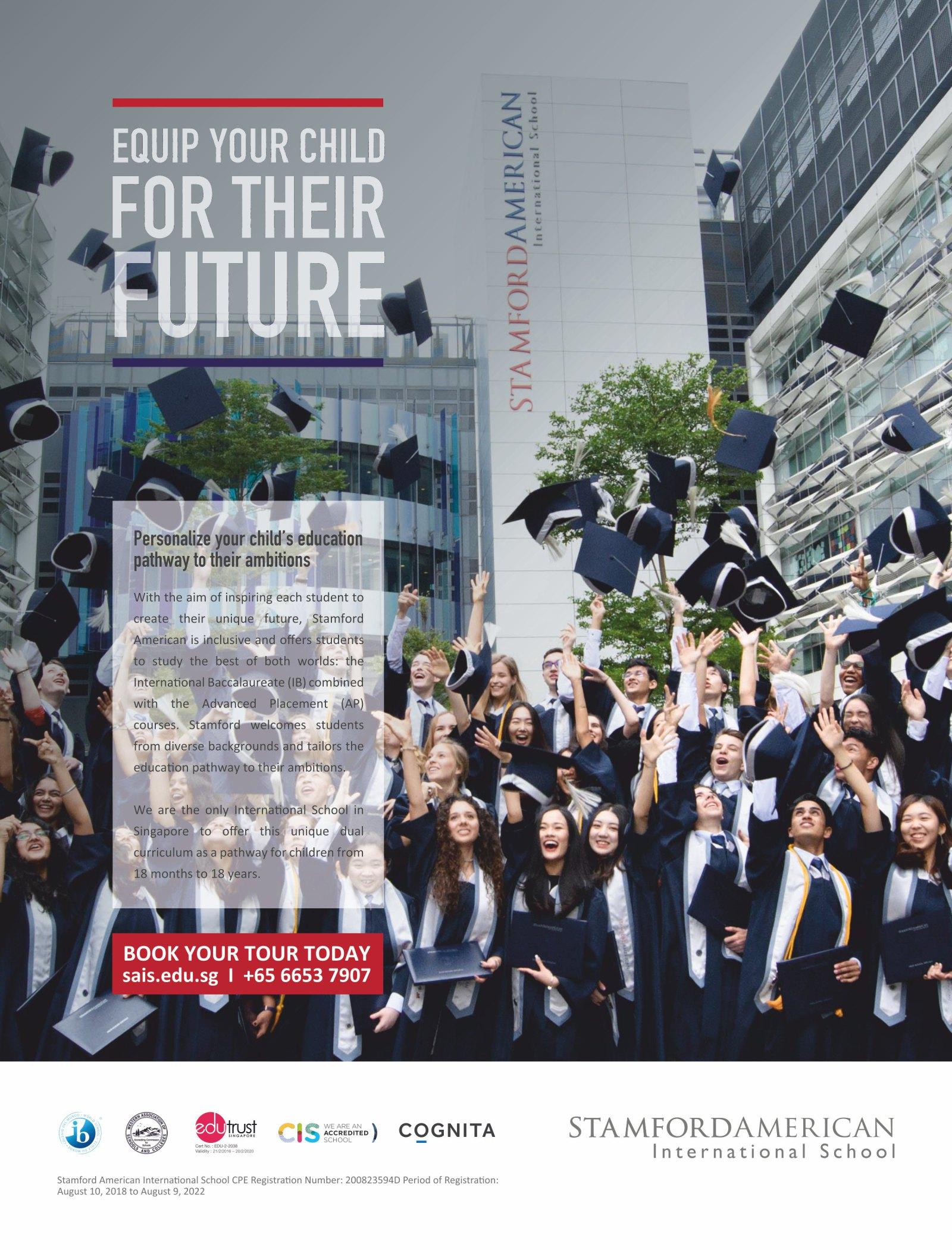








Inaworldwherenumbersoftentellthestory,RichardC.Larsonchosetowritehis
own—layerednotjustwithformulasandmodels,butwithmeaning,innovation,and profoundhumanimpact.Anamesynonymouswithappliedmathematics,operations research,andeducationalreform,Dr.Larson’sjourneystandsasarareintersectionof intellect,purpose,andperseverance.
Knownfondlyas“DoctorQueue”forhisgroundbreakingworkinqueuingtheory,Richard Larsondidn’tsimplyobservesystems—hetransformedthem.Whetheraddressingurban congestion,emergencyresponseoptimization,orthestructureofacademiclearning,his modelshaveredefinedhowsocietytacklesreal-worldchallenges.Yetbeyondthebrilliance ofhisalgorithmsliessomethingevenmorecompelling:alifelongdedicationto democratizingknowledgeandempoweringotherstothinkcriticallyandactdecisively This featureisdedicatedtothatlifelongmission.
Richard’sleadershipatMIT—bothasafacultymemberandasthevisionarybehindMIT LINC(LearningInternationalNetworksConsortium)—reflectshiscorebeliefthateducation mustevolvetoserveaglobalaudience.Hisworkhascrossedcontinents,disciplines,and generations,alwaysreturningtoonecentralprinciple:thatknowledge,whensharedwith integrityandclarity,cansolveeventhemostcomplexofproblems.
WhatstandsoutmostaboutDr.Larsonisnotonlythedepthofhisacademiccontributions butthehumilityandcuriositythatcontinuetodrivehim.Heisnotcontenttorestonlegacy; heistoobusybuildingthefuture.Fromadvisinggovernmentsanduniversitiestomentoring thenextwaveofthinkers,RichardC.Larsonremainsapowerfulforceinboththeoryand practice.
The Mathematician Who Wrote His Own Story celebratesalifelivedatthefrontierof intellectandimpact.Ithonorsamanwhoshowedtheworldthatmathematicsisnotjust aboutnumbers—it’saboutvision,leadership,andthecouragetoshapetheworldwithboth logicandheart.
Thisfeatureisforthestudentshe’sinspired,thesystemshe’simproved,andthefuture leaderswhowillfollowhisexample.




08.
F E A T U R I N G
Richard Larson’s Vision
Advancing Academic Innovation, Mentorship, and Lifelong Learning in Transformative Ways

18.
A R T I C L E S
22.
Professional Identity and Personal Voice in Contemporary Mathematical Memoirs
The Intersection of Personal Narrative and Mathematical Achievement in Contemporary Biography
Editor-in-Chief
Deputy Editor
Managing Editor
Assistant Editor
Visualizer
Art & Design Head
Art & Design Assitant
Business Development Manager
Business Development Executives
Technical Head
Assitant Technical Head
Digital Marketing Manager
Research Analyst
Circulation Manager
Mia

Richard









In an era defined by rapid technological advancements andshiftingeducationalparadigms,theroleofvisionary educatorshasneverbeenmorevital.Attheconfluenceof intellectualdepthandpedagogicalinnovationstandsRichard Larson, an MIT professor whose influence extends far beyond the classroom. His work has not only redefined how knowledgeisimpartedbutalsohowmentorship,authenticity, and research converge to shape the academic leaders of tomorrow At a time when education demands adaptability, accessibility, and creativity, Larson's journey offers a blueprintforthefutureoflearning.
ThestoryofRichardLarsonisonedeeplyrootedinacademic excellence, innovation, and an unwavering commitment to nurturinghumanpotential.Hisapproachintegratesalovefor learningwithpragmaticexecution,ensuringthatstudentsare not just consumers of information but lifelong learners and critical thinkers. Through programs like MIT BLOSSOMS andhistransformativementorship,Larsonhascreatedripple effects in global education, enabling access to high-quality STEMresourcesandempoweringgenerationsofstudentsand scholars.
As higher education institutions seek to make knowledge moreinclusiveandinteractive,Larsonexemplifiesthefusion of tradition with forward-thinking From shaping the intellectual culture of MIT to mentoring over 30 Ph.D. candidatesanddevelopingmodel-basedthinkingforreal-life applications, Richard Larson's journey is a testament to the powerofpurpose-drivenacademia.Hisstoryisnotonlythat ofascholarbutofachangemaker—onewhoseinfluencewill resonatefordecadestocome.
According to Richard Larson, his introduction to MIT was unplanned, and yet it became the cornerstone of his life's work. He joined the institution as an assistant professor immediately after completing his Ph.D., which focused on

using Operations Research models to study urban police departments.Larsonoriginallyimaginedstayingonlyashort while. However, MIT’s dynamic academic environment, paired with his growing passion for teaching and research, transformedthattemporaryroleintoalifelongcommitment.
Ashereflects,teachingandworkingwithstudentshavebeen the most fulfilling aspects of his career. Over time, Larson would hold faculty positions across five academic departments at MIT, an uncommon feat that underlines both his versatility and wide-ranging intellectual interests. From dayone,hismissionhasbeenconsistent:toimmersehimself in learning, contribute meaningfully to his field, and positivelyinfluencethestudentcommunity
Richardemphasizesthatbecomingan“MITlifer”wasnever theplan—butitbecameanaturalevolution.Thecollaborative spirit of the institution, the ability to cross disciplinary boundaries, and the sheer energy of student innovation inspired him to dig deeper into the academic mission. His journeyreflectsthepowerfulsynergythatcanexistbetween aninstitution’svisionandanindividual’spurpose.
CentraltoLarson’sphilosophyistheconvictionthatlearning should be joyful, curious, and deeply engaging. He explains that,asaneducator,hisgoalisnotsimplytotransmitfactsbut tofosteraloveforlifelonglearning.“Ialwaysapproachanew



topic with an enthusiastic, open mind, trying to understand fromvariousperspectives,”heshares.ForLarson,theability to spark this intellectual curiosity in students is perhaps his greatestcontribution.
He warns against excessive focus on rote memorization, emphasizinginsteadtheimportanceoflearninghowtolearn.
“Minimizingfocusoncontentmemorizationandmaximizing attention to learning how to learn is highly effective for students,” he says. This approach enables students to apply concepts more flexibly and creatively, ensuring that they remainadaptableinarapidlychangingworld.
Larson believes that the real legacy of a teacher lies in empowering students with the tools and confidence to explore,question,andinnovateontheirown.Hisclassrooms have never been about delivering lectures from a pedestal; they’vebeenspacesofcollaborativediscovery,whereteacher andstudentevolvetogetherinthepursuitofknowledge.
RichardLarsonseeshisacademicimpactastwofold:through mentoringandthroughresearch.Heunderscoresthepowerful influencethatgraduateresearchadvisorshaveinshapingthe

next generation of scholars. Being a mentor involves more thanguidingdissertationtopics—it’saboutcontinuous,faceto-face support, critical feedback, and intellectual partnership. Larson considers this personal involvement essentialtofosteringacademicexcellence.
Alongside mentorship, Larson highlights the significance of scholarly writing. “Authoring and co-authoring research papershelpsextendyourinfluenceandshapethetrajectoryof yourprofession,”henotes.Hisbodyofworkspansoperations research, education reform, and policy models each publication serving as a touchstone for ongoing debates and developmentsintheirrespectivefields.
These dual roles have not only advanced his own academic standingbuthavealsoleftanindeliblemarkonstudentsand colleagues alike. In Larson’s eyes, building knowledge and buildingpeoplearetwo sides of thesamecoin,andbothare centraltothemissionofhighereducation.
Inaworldoftenswayedbyfleetingacademictrends,Larson maintains a pragmatic focus. “I tend to ignore academic trendsandsimplyfocusonwhatisbeforeme—studentsand




scholarship,”hestates.Thisphilosophyhasservedhimwell, grounding his work in relevance and impact rather than chasingmomentaryprestige.
One of the most illustrativeexamples of this approach is his roleinfoundingMITBLOSSOMS(BlendedLearningOpen Source Science or Math Studies) This initiative offers interactiveSTEMlearningmodulesforhighschoolstudents globally, entirely free of cost. Available on YouTube, these lessonsembodyLarson’sbeliefthateducationshouldbeboth accessible and engaging. By blending high academic standards with universal accessibility, BLOSSOMS has becomeamodelforscalable,qualityeducation.
Rather than conforming to what academia expects, Larson redefinesthoseexpectations.Hispracticallensdoesn’treject innovation; instead, it ensures that innovation serves a real educationalpurpose.
Beyond the walls of MIT, Larson has committed himself to makingadifferenceinbroadereducationalcommunities.His work with Notre Dame Cristo Rey High School, which serves students from socio-economically disadvantaged backgrounds, is one such example. As a board member, he actively supports their innovative work-study model, which covers most of the students’tuition and guarantees a 100% collegeacceptancerate.
Larson sees this initiative not just as charity but as a partnership in potential “The staff and students are outstanding,allhavinganoverarchingpurposethatinspires,” he shares. His role there is less about accolades and more about service. “If I have played some small positive role by volunteeringmytime,Iamhappy.”
This ethos of humility and dedication underscores Larson’s broader worldview—one that believes in creating impact where it is most needed, regardless of whether it makes headlines.
One of the most remarkable aspects of Richard Larson’s journey is his ability to merge academic life with personal fulfillment For him, these aren’t opposing forces but complementary elements of a meaningful life. Many of his closestfriendshipshavebeenforgedwithinacademiccircles, including former students who have become lifelong colleaguesandconfidants.
Larson’s approach demonstrates that personal satisfaction and professional excellence are not mutually exclusive. In fact, they often feed into one another. His academic life has not been a career in isolation but a lifestyle of continuous learning,communityengagement,andpersonalenrichment.
This balance has been key to sustaining a career that spans decadeswithoutlosingpurposeorpassion.
Withmorethan30Ph.D.studentsmentoredandsupervised, Larson’sinfluencereverberatesacrossacademiaandindustry. Hetakesprideinwatchingtheircareersflourish,knowingthat his guidance played some role, however small, in their success. “Many stay in touch with me,” he says. “Their continuedcommunicationreinforcesthetiethatwecontinue tohave.”
For Larson, mentorship isn’t a transaction it’s a relationship.Thesebondsformalivinglegacythatextendsfar beyondanypublicationorprogram.Eachstudentbecomesa nodeinagrowingnetworkofthinkers,doers,andeducators who carry forward the values of intellectual curiosity and integrity
RichardLarsonoffersclear,heartfeltadvicetothosewishing tobuildameaningfulacademiccareer:“Betruetoyourself.”



Heurgesyoungscholarstopursuesubjectsthatsparkgenuine passion, not merely what is fashionable or fundable. “You mustanswertoyourselffirst,thentoothers,”heasserts.
He also recommends finding an academic environment that aligns with one's values—places that prioritize exploration over conformity Hard work is essential, he emphasizes, but soisthecouragetochartyourownintellectualpath.
Thisphilosophyhasguidedhisownlife,andhebelievesitcan helpothersforgeacareerthatisbothimpactfulandfulfilling.
Now semi-retired from teaching and student supervision, Larsonhasenteredanewphaseofhiscareer—onemarkedby innovationyetagain.Insteadofthetraditionaltitle“Professor Emeritus,”Larsonnegotiatedanewdesignation:“Professor, Post-Tenure.” This role allows him to remain active and productivewhileopeninghistenureslotforayoungerfaculty member
MIT has embraced this new title, and other institutions are beginning to follow suit. It reflects a growing need for transitional roles that honor senior faculty contributions withoutseveringtheirengagement.









Larson's latest passion project is introducing his concept of MODEL-Based Thinking to a global audience. His book, MODEL THINKING For Everyday Life, applies analytical frameworkstodailydecision-making,blendinghisacademic expertisewithpracticalutility.
RichardLarson’slifeisamosaicofdedication,creativity,and purpose. From pioneering new teaching methods to mentoring future leaders, from reshaping education through digital platforms to contributing quietly to high school students’futures—hisimpactisdeepandwide.
Heexemplifieswhatitmeanstolivealifealignedwithone’s values,whereworkisnotjustajobbutameaningfuljourney As education continues to evolve, the world will look to leaders like Larson—those who innovate not for accolades, but for outcomes that uplift individuals and communities alike.
His story is not just one of academic achievement. It is a human story—of integrity, connection, and the relentless pursuit of making learning more joyful, accessible, and enduring.












Whileinotherwiseabstractandtheoretical
mathematics,thehumanstorybehindthe numbers and symbols is not visible, in recent years there has been a strong literary renaissance Contemporary Mathematical Memoirs—that are breathing life into otherwise dry mathematics These books weave together the professional and personal life of mathematicians, revealing to us a glimpse of their existence, their struggles,desires,andotherwiseconcealedhumanity thatmakesthemscholars.
These memoirs are proof of professional identity formation with extremely personalized voice, pointingtoanewgenretoreachbothgeneralreaders andacademics.
Modern Mathematical Memoirs are quite recent, gaining momentum as mathematicians more and more use narration to express their lives Mathematics has traditionally been expressed in the form of theorems, proofs, and papers heavy on formality. But memoirs like "The Man Who Knew Infinity" (on Srinivasa Ramanujan) or Edward Frenkel's"LoveandMath"havebroughtreadersinto a new, more intimate way of conveying knowledge—tallstoriesmakingthemathprocessand themathpeoplemorehuman.
These texts offer more than anecdotal enjoyment; they are bridging between mathematical rigor of reason and the affective landscape of experienced life. They are concerned with the construction of professional identity, tracing a mathematician's journeythroughtimesofdoubt,tenacity,inspiration, andeventually,breakthrough.
At the center of Contemporary Mathematical Memoirs lies the definition of professional identity not static but evolving, forming. The memoirs usually begin in humble origins, with accounts of childhood interests, early arithmetic difficulties, or managers who ignited long-term passion. The narrative then runs along with school achievement, research breakthroughs, and disappointingsetbacksthatoutlineanyprofession.
Itisofgreatimportanceintheshapingofprofessional identity. Mathematicians, no less than artists or

writers,typicallystrugglewithimpostersyndrome,isolation, or public perception of their profession. Memoirs provide a stageonwhichtoargueagainstsuchadversitiesrealistically CathyO'Neil's"WeaponsofMathDestruction,"forexample, speakstohertransitionfrompuremathematicstodatascience andpolicyandthebuildingofherworkingselfasaresponse to ethical and moral issues. These memoirs help readers, especiallyyoungreaders,understandthatmathidentityisnot made by equations, but by choices, ethics, and growing as a humanbeing.
Within an often objectivizing and exacting discipline, ContemporaryMathematicalMemoirs'ownpersonalvoiceis refreshing and exciting. In their first-person narratives, the books place readers in the mathematician's inner world—whereas normally they experience anxiety before a lecture, relief at having cracked an unsolved problem one labored on for decades, or loneliness about fussing over somethingnooneelsegrasps.
This personal tone does not detract from the intellectual gravity of the topic; instead, it contributes to it. By putting abstract ideas into personal perspective, these memoirs help elaborate on complicated ideas and make them more emotionally resonant An excellent example is Steven Strogatz's"TheJoyofx,"whichemployspersonalanecdotes to explain mathematical concepts. The tone is not that of a tutor but of one journeyman explaining his passion and frustration.
So, Contemporary Mathematical Memoirs encourage empathy.Mathematiciansarenotportrayedasaloofgeniuses butasindividualswithfamilies,hobbies,mentalillness,and periodsofself-doubtjustlikeus.
Storytelling
Mathematical Memoirs in ModernTimes are also becoming morevaried.Mathematicsasasubjecttraditionallyhasbeen dominated by men from specific groups and so have the memoirs. Increasingly, more and more women's, minority, multicultural,andsocio-economicmemoirsarebreakingthat.
Books like Francis Su's "Mathematics for Human Flourishing"putmathematicsintoabroadcontextbeyondthe academic, intertwining it with questions of justice, beauty, and love Mathematicians Eugenia Cheng and Maryam Mirzakhani (in posthumous works) are no longer simply being praised for what they have accomplished but for the
unique perspectives they are capable of bringing to their studiesandliterature.
These varied voices enrich the genre, proving that the professional mathematician persona is not unique. It is socially constructed, created by society, family, culture, and language,andallaretransmittedviamemoir
Impact on Readers and the Larger Mathematical Community
Contemporary Mathematical Memoirs are not ego trips or vanityventures.Theyplayanimportantroleinoutreachand education.Newprofessionalsandyoungstudentsalikehave the ability to bring discipline open and provide advice, encouragement, and inspiration. To the public at large, they areawindowofopportunityintoaprofessionthatotherwise appearsoutofreach.
Significantly, these memoirs are rewriting what the public knows about being a mathematician. No longer the absentminded genius stereotype, mathematicians are now being seen as whole people—curious, flawed, imaginative, and deeplyhuman.
Conclusion:MoreThanNumbers
Finally, Contemporary Mathematical Memoirs are windows and mirrors—mirrors to look back into for insiders on their own journeys, and windows for outsiders to peek into the wholelivesofmathematicalthought.Theydocumentnotjust careers, but lives. They trace not just the development of theories,butofindividuals.
By merging professional self and personal voice, these memoirsredefinedoingandbeingmath.Theyremindusthat behindeachformulaliesapersonandthatthereisastorytobe toldforeachdiscovery.



Intoday'schangingworldofcontemporarybiography, oneofthefascinatingtrendsisinthedirectionof increasingfocusontheindividualstoryasafilterto applyinpenetratingintellectualachievementspecifically,in theareaofmathematicalachievement.
Mathematiciansnolongeraredepictedasabstractions, theoreticalgeniuses;theynowincreasinglyareunderstood tobeflesh-and-bloodindividualsinfluencedbyculture, identity,conflict,andinspiration.
Mathematicalsuccessisusuallyseenasaproductofgreater intelligenceandthinkingcapacity.Contemporary
biographicalhistoryremindsus,though,thatpersonal experience,emotionaltransformation,andcultural backgroundaresignificanttoo.Individualssuchas KatherineJohnson,TerenceTao,andMaryamMirzakhani revealhowlifeexperiencecaninspireandimproveone's workinmathematics.
ThestoryofFieldsMedalrecipientMaryamMirzakhaniis morethancalculations.It'sastoryofsomeonewhocameof ageduringwartimeinIranwithapassionforfantasyand tellingstories.Shesucceededasamathematician,notjust throughbrains,butthroughtheabilitytoobserve,to imagine,andtotranscendwhatwasaboutherandwhatwas culturallyknownaboutwomenandmathematics.


Nevermerelylabeled"theMozartofMath,"TerenceTao's remarkableskillisinfamouslywidelyrecognized.Buthis storyalsooffersthevaluableroleofemotionalintelligence, inquisitiveness,anddomesticlife.Hismathematicalsuccess isaresultofskillwiththeadditionofsupportfromfamily andautonomyinscholarship.
Contemporarybiographiesdonothesitatetoappendthe lessflatteringpagesofamathematician'slife.JohnNash, forinstance—whosecontributiontogametheoryis colossal.Buthisschizophrenia-taintedlifeandeventual returntoscholarlypursuitssketchesoutaveryhuman character.Hismathematicalvictorycannotbeseparated fromhisobstinacyandneatlyentangledinnerexistence.
Biographiesofthepresentdayreaffirmthepointthat mathematicalsuccessdoesnotcomewithonetrack.The majorityofbiographiesofthepresentdayarepeoplewho learnedmathematicslateroninlife,hadsocialoreconomic issues,ortookunconventionalpathsoflearning.These biographiesreaffirmthepointthatmathematicalsuccessis nolongerforprodigiesaschildren—itisforanyonewhois willingtotakethepathofheartanddetermination.
Incorporatingpersonalexperiencesintobiographiesmakes mathematicsrelatableandachievable.Itshiftspeople's
perceptionofmathematicsfromthealoofandcoldpicture. Theindividualswhoreadandlearnidentifywiththese personalstories,andmathematicsbecomesanachievable optionandnotapipedream.
Biographersaremorethanevercaptivatedwithplacingin thelimelightunsungvoices—women,minorities, immigrants—whoseworkinmathhasbeenoverlookedfor solong.Thischangenotonlyredressespastwrongs;it expandsallofourunderstandingofwhatmathsuccessis, andwhogetstocalltheshots.
Themarriageofpersonalhistoryandmathematical achievementisamorehuman,richermeansofstorytelling. Behindeachequationstandsthepersonwhohasbeen guidedbyexperience,desire,failure,andachievement.This approachinvitesreaderstobeamazedandtorelatetothe individualswhohavemadenumbersaricheruniverse.
Aswegoondocumentingmasterminds'lives,weknowthe greatestthingwehavelearnedsofarisperhapsthis: mathematicaltriumphisnotmerelyaboutnavigating problemsbutalsoaboutenduringthemaswell.By acknowledgingthehumanelementintheproofs,weenrich themathhistoryandprovideroomforeachstoryto contributeinsights.



